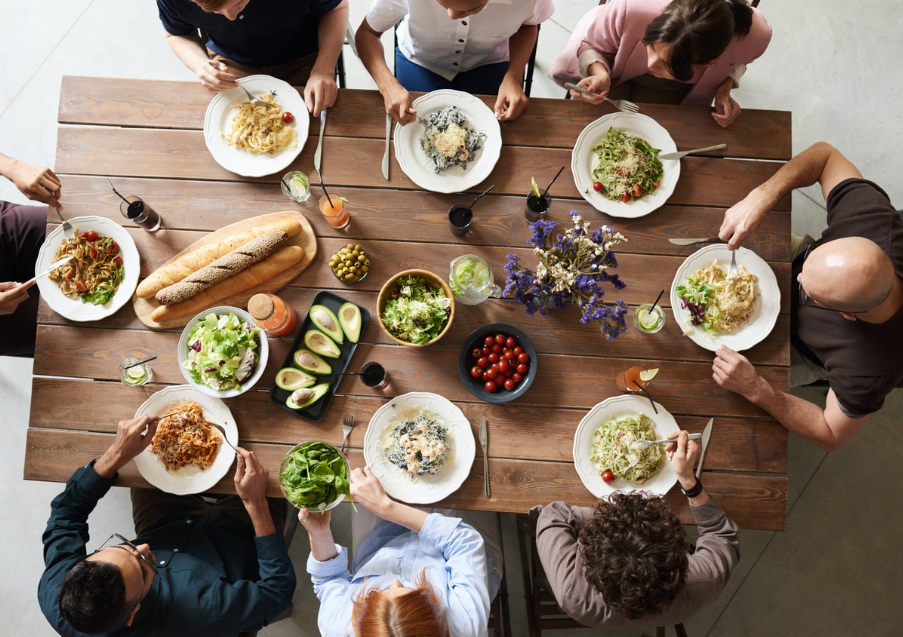Transformation process
All the food we consume goes through two stages: mechanical transformation and chemical transformation.
Mechanical transformation
During the mechanical stage, food is crushed in the mouth using the teeth (chewing) then arrives at the stomach by passing through the esophagus. The different layers of the latter continue the grinding thanks to contractions. Finally the action ends in the intestines.
This mechanical action therefore makes it possible to reduce the size of the food and to have small fragments which can be attacked more easily chemically speaking.
Chemical transformation
As for the chemical breakdown of food, it happens throughout the digestive tract. It is provided by enzymes such as amylase contained in the digestive juices released by the salivary glands.
Saliva moistens food, while enzymes break up sugar and starch chains. The food is then transformed into a bolus and pushed to the esophagus and then to the stomach. Their transformation continues in the stomach, the body digests food by mixing it with liquids: hydrochloric acids secreted by the gastric glands and bile secreted by the liver. Part of the food becomes soluble thanks to the action of gastric juices and mixing. In fact, the enzymes contained in digestive juices break up the molecules of different categories of food into parts.
This transformation is completed in the small intestine where these foods become nutrients. Carbohydrates (sugars and starches) break down into another type of sugar: glucose, lipids also break down to provide fatty acids and glycerol, proteins are transformed into amino acids. These nutrients are directly assimilated by the body and it is in the small intestine that they pass through the blood. This absorption takes place in the intestinal villi, lined on the intestinal wall.
This chemical transformation is the final step in the production of energy. It destroys large molecules in order to produce nutrients capable of being absorbed and used by the body as fuel.
From digestion to energy
Undigested food passes into the large intestine, forms excrement and is pushed out of the body at the anus.
Nutrients that come from the digestion of food ingested during chemical and mechanical reactions generate energy to enable the proper functioning of the body.
Macromolecules transformed into nutrients constitute the source of energy for our body. Simple, right?
Note that the energy our body produces comes from the foods we eat or drink. Three main nutrients provide energy to our body: carbohydrates, proteins and fats.
Carbohydrates are the most important source of energy; in case of exhaustion, the body can therefore use proteins and fats.
The calorie, unit of measurement of the energy value of foods
The body needs energy intake to function, its unit of measurement is the calorie, precisely kilocalories as follows: 1000 calories = 1 kilocalorie (1000 cal = 1 kcal).
Daily calorie needs vary depending on genetics and therefore depend on several factors such as age, weight, gender and muscle mass.
Thus, for a moderate activity of 30 minutes, women need 1800 Kcal and men 2100 Kcal while when it comes to intense activity, women need 2000 Kcal and men 2500 at 2700 Kcal. Please note that these figures may vary from one individual to another.
However, energy expenditure and energy needs must be balanced. Monitoring your calorie intake allows you to monitor your weight and helps some people lose weight. If you eat more high-calorie foods than you need, you risk finding yourself overweight or obese. You must therefore review your eating habits.
You can also calculate your body mass index (BMI ) to assess your body size and maintain your ideal weight; in fact, doctors use it to assess your nutritional status. A low BMI or a high BMI poses a health risk, so have a good balanced diet.
Whether our body is at rest or active, it always needs energy. As a result, there is the basal metabolism or basic metabolism. This is the minimum amount of energy that the body needs to maintain its vital functions such as breathing, for example. Basal metabolic rate, better known by the acronym BMR, consists of the amount of energy used by the body at rest.
Foods to favor
For an energy metabolism to be optimal, the foods consumed must contain sufficient nutrients, moreover, all foods provide them but there are some which contribute more to the production of energy than others:
- Banana
- Fish (Salmon, tuna)
- Whole grains (brown rice, oats, wheat)
- Egg
- Honey
- Lenses
- Dried fruits
- Seeds (Sunflower seeds, sesame seeds, flax seeds)
We can also include foods containing carbohydrates, fiber, proteins and vitamins, antioxidants and minerals. Foods high in calories must also be taken into account.
If the foods we consume are not rich in nutrients, the metabolism process does not work properly and that is why you feel tired. It is therefore imperative to meet the nutritional needs of your body. If you practice physical activity your calorie needs may not be the same as for a sedentary person.
